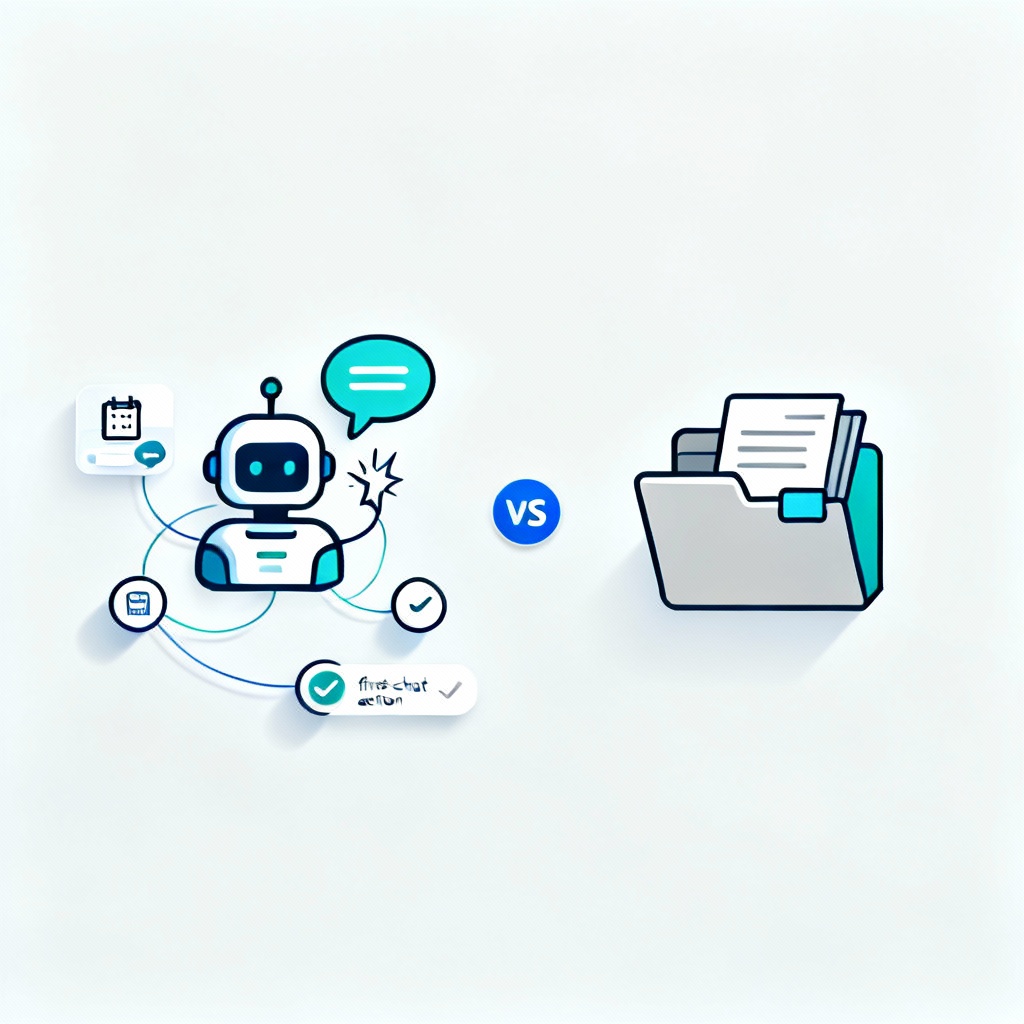Intro
If your support volume keeps rising but your headcount can’t, the right platform choice matters. Traditional helpdesks centralize tickets and macros. Text App goes further—combining actionable AI agents, intuitive automations, and built-in campaigns so you resolve more, faster, without adding staff.
Resolve more, faster—without more headcount. Try Text App
Quick verdict
- Choose Text App if you want AI agents that can qualify, route, and complete tasks in the first chat (book meetings, update CRM, create tickets) and a simplified agent workspace that reduces handle time.
- Choose a traditional helpdesk if you only need basic ticketing, email routing, and manual workflows with minimal automation.
Comparison table (overview)
- First-contact resolution (FCR)
- Text App: High—AI agents complete tasks in-chat; strong agent-assist.
- Traditional helpdesks: Moderate—macros and basic bots; often needs human follow-up.
- Time-to-first-action
- Text App: Seconds—first-wave lead handling, instant bookings/updates.
- Traditional: Minutes to hours—triage and handoffs.
- Agent efficiency
- Text App: Simplified UI, suggested actions, automation coverage cuts clicks.
- Traditional: Context switching between apps, heavier manual steps.
- Integrations and campaigns
- Text App: Built-in campaigns, CRM/helpdesk/marketing stack integrations.
- Traditional: Integrations vary; outreach handled in separate tools.
- Scale without headcount
- Text App: Designed to resolve more with the same team.
- Traditional: Often requires more agents as volume grows.
See how first-chat actions work → Try Text App
What sets Text App apart
- Actionable AI agents
- Auto-qualify leads, route conversations, and execute tasks: book meetings, create/update tickets, push data to your CRM—inside the same chat.
- Impact: Higher FCR and shorter resolution times because the “bot” actually completes work, not just answers FAQs.
- Effortless agent workflow
- A clean workspace with suggested replies and automations reduces handle time and training.
- Agents focus on exceptions while repetitive steps run automatically.
- Campaigns and integrations
- Triggered outreach and lifecycle nudges increase engagement without switching tools.
- Integrates with your CRM, helpdesk, marketing tools, and data layer for quick time-to-value.
Where traditional helpdesks still fit
- You run simple, email-heavy support with low volume and standard SLAs.
- Your org prefers manual triage with macros and basic bots.
- You don’t need in-chat task completion (bookings, CRM updates) yet.
Side-by-side: common workflows
Use case 1: First-chat lead handling
- Text App: AI qualifies lead, books calendar, writes to CRM, routes to AE if needed—within one conversation.
- Traditional: Bot collects info → ticket or email to team → rep books meeting manually → CRM updated later.
Use case 2: Order status and returns (ecommerce)
- Text App: Looks up order, validates policy, generates label, updates ticket/CRM, confirms to user.
- Traditional: Bot hands off to agent, agent checks systems, sends label, updates records manually.
Use case 3: Account updates and access
- Text App: Verifies identity, triggers password reset or plan change, logs changes automatically.
- Traditional: Agent-driven steps via separate admin tools.
Outcomes and metrics to watch
- First-contact resolution (FCR): Expect an uplift when tasks are completed during the chat.
- Average handle time (AHT): Fewer clicks and less context switching reduce agent time per issue.
- Time-to-first-action: AI-driven first-wave actions tighten response loops.
- Cost per resolution: More automation + fewer handoffs => lower cost per solved ticket.
- Conversion from support to sales: In-chat qualification and bookings turn support into pipeline.
Implementation: getting value fast
- Week 1: Connect your CRM/helpdesk; enable core automations (password reset, order status, simple FAQs).
- Week 2: Turn on first-chat lead handling: qualification, routing, and instant booking.
- Week 3: Add campaigns for re-engagement and NPS follow-ups; review reporting and refine flows.
Security and control
- Guardrails and role-based permissions ensure AI agents only perform approved actions.
- Full audit logs and data handling controls for compliance-conscious teams.
FAQs
- Can AI really complete tasks, not just answer FAQs?
- Yes. Text App’s agents can book meetings, update CRM records, create tickets, and more—directly from chat.
- Do agents stay in control?
- Absolutely. Agents can approve actions, use suggested replies, and override when needed.
- How does this fit into my current stack?
- Text App integrates with major CRMs, helpdesks, and marketing tools so you can start without ripping and replacing.
- Will this replace my team?
- No—it augments your team by handling repetitive tasks and first-wave actions so agents focus on higher-value work.
Resolve more, faster—without more headcount. Try Text App
Affiliate Disclosure: This post contains affiliate links, which means we may receive a commission if you click a link and purchase something we have recommended. This comes at no extra cost to you. We only recommend products and services that we have personally used or thoroughly researched and believe will benefit our readers. Your support helps us continue creating valuable content. Thank you!
